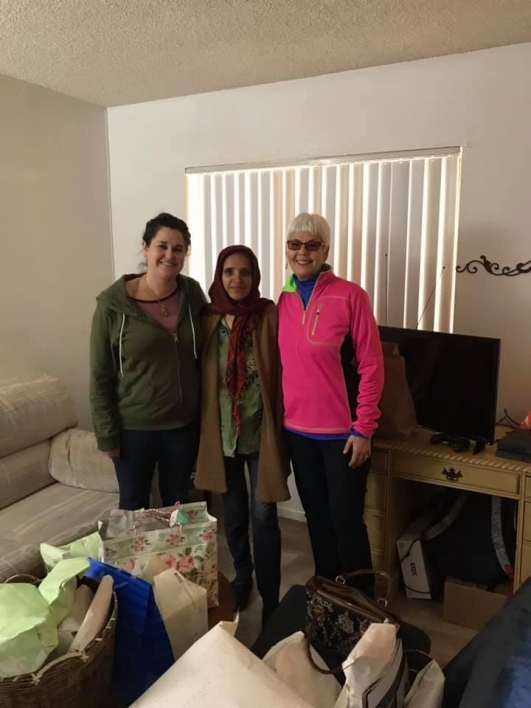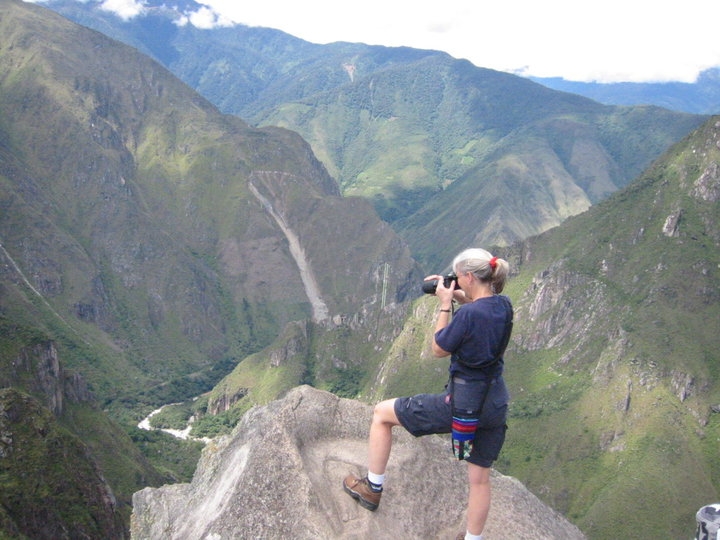Retiring ASU human geographer committed herself to deepening students' understanding of people, places, cultures

Elizabeth Larson in the Dominican Republic in 2016. Photo courtesy of Elizabeth Larson
Elizabeth Larson was 21 when she first traveled abroad as an undergraduate student on a college winter immersion trip to Yucatán, the Mexican state known for its Gulf of Mexico and Caribbean beaches and Mayan ruins.
She visited massive pyramids and stone temples. She ate traditional cuisine, used the Spanish she knew and immersed herself into a vibrant culture that was all unfamiliar.
“As a young person at that time, I fell in love with language, with travel, with people, with Mexico and Latin America,” Larson recalled. “That was my first experience traveling out of the country and I couldn’t get enough of it and I couldn’t stop.”
She started to laugh. “I’ve never stopped since.”
Now, Larson, a human, social and cultural geographer, and senior lecturer in ASU’s School of Geographical Sciences and Urban Planning for nearly 20 years, retired this year. In her tenure, she’s introduced tens of thousands of students to foreign places, cultures and world crises.
She draws on her travels and global refugee research to center her teaching beyond just the facts but on the human condition and experience of individual lives from around the globe.
“Beth Larson is a kind and compassionate person who possesses acute social and cultural sensibilities. This nourishes her teaching, which helps students understand people and places far and wide,” said Kevin McHugh, professor in the School of Geographical Sciences and colleague of Larson’s for 18 years. “Beth has long been a champion of human rights and she has been engaged in peace studies, something I have always admired.”
“She is a gifted teacher whose impact on ASU students over these many years is immeasurable.”
Geography and an evolving world

Elizabeth Larson
Especially drawn to advancing the understanding of peoples and places subject to political conflict, poverty and displacement, early in her career, Larson was one of the first researchers in the country to study populations and migrations of refugees academically.
Using a geographical lens, Larson studied Central American refugee populations, their integrations into their "host" countries and their movement. Her field research took her around the world, meeting and connecting with people of diverse backgrounds from Costa Rica to Nicaragua to El Salvador to Guatemala and beyond.
“People can move individually, but if you have mass people moving across the borders something is going on in their country and they’re fearing for their lives,” Larson said. “I was really looking at these ideas about war, struggle and suffering, peace and all those ideas around the refugee movement.”
Fitting the world into the classroom
Larson’s ASU story began in 2003, following more than a decade of teaching at other colleges across the country. She taught a variety of human and regional geography courses, and in each, drew on her personal experiences abroad with an emphasis on cultural richness, diversity and humanness in her lessons.
“She was my first human geography teacher. From the very first lesson, I quickly realized that there was a lot that I neglected or paid little attention to,” said Gabby Kauffmann, a former student of Larson’s at ASU. “Dr. Larson made geography personal.”
Over the course of her tenure at ASU, Larson taught nearly a dozen courses ranging from population geography to human geography to society and environment to geography courses that explored Latin America, the Middle East, north Africa and middle America.
She evolved and taught the widely popular course Geography of World Crises, introducing students to current and past global calamities, and brought together geographical concepts and storytelling through literature, incorporating especially moving stories such as Khaled Hosseini's “The Kite Runner” in her teaching.
“Dr. L gave me the opportunity to see geography from another perspective. She got me to think about issues that I had never really given much thought to or didn't know that I had an interest in,” said Kelli Roseberry, a former student and ASU alumna. “Dr. L loves people and loves teaching. She truly cares about each person and is also passionate about learning from her students.”
Students recall that Larson not only encouraged learning from her lessons, but from each other. She encouraged her students to share their own varying experiences and backgrounds, and created an open and welcoming space for students to speak their minds.
“Dr. Larson is and always will be my favorite teacher I have ever taken in my academic learning,” said Josh Jablonsky, an ASU alumnus, who took six of Larson’s classes. “Dr. Larson taught me to be open minded, always do your research so you can contribute to the conversation, as well as always look at problems through other people's perspectives.”
Combining service and learning
At the heart of all her work, Larson says, is a value instilled in her since childhood: service.
Growing up in Rice Lake, a quiet town in northern Wisconsin known for its farmed wild rice and warm hospitality, Larson was a middle child of six brothers and sisters, raised by parents who emphasized kindness, acceptance and caring for others.
If there was a kid at school being bullied, Larson was always befriending that person. At every birthday party she had, she never excluded anyone.
“We did things through the church or community, if someone was sick or someone passed away, we made the casserole to take to the house or we cleaned up the church after the funeral dinner, things like that,” Larson recalled. “We were always doing something.”
It’s this spirit that she took into her research and passed forward through her teaching.
Combining service and learning, Larson simultaneously exposed students to the needs of society, and the opportunities to get engaged to help.
Larson served as the faculty adviser for half a dozen student organizations committed to service, including COAR (Community Outreach Advocacy for Refugees), Devils Pitching In, Stand Up for Kids, Nourish International, Global Outreach and Student Social Network for Global Education alongside others.
She also spearheaded and organized the School of Geographical Sciences and Urban Planning’s annual volunteer holiday campaign, which sponsors local, newly settled refugee families through the International Rescue Committee.
She was a founding member of the ASU School of Geographical Sciences and Urban Planning Justice Equity Diversity and Inclusion (JEDI) committee, a community-development visioning and workshop facilitator for Arizona Indigenous tribes, and an Arizona Geographic Alliance affiliate faculty member who gave talks to K–12 teachers about global issues and the world’s changing demographics.
“The most important lessons I learned from Dr. Larson was the importance of continuing to educate yourself on issues around the world and the importance of even small acts of advocacy,” said Ashley Thompson, ASU alumnus and former COAR student president. “Dr. Larson worked so hard to encourage all of her students, both within her classes and without, to participate in advocacy acts, like hosting or participating in drives for toiletries and other needed goods for refugees or children being detained at the border.
“I feel so privileged to have gotten to work with Dr. Larson during her time at ASU. She is so kind and has such a passion for service for others.”
The road ahead
Larson will miss her colleagues, students and teaching, but says she’s grateful for the friendships she’s been able to maintain over the years.
When asked what lies ahead after retirement, Larson doesn’t hesitate: “Lots of traveling.”
Some of her plans already include traveling to Italy or Morocco in the winter, and then spending some time teaching English to children on a small island in Brazil alongside another retired ASU faculty member.
“I want to keep traveling, I’ll take any opportunity that's offered to travel and go somewhere,” Larson said. “I’ll go anywhere I can and if there isn’t an opportunity, I’ll create one to travel. I could even see myself working with immigrants at the border.”
And for Larson, she says, at the center of her travels, “there will always be service.”
Whether in Tempe or across the southern border or around the globe, Larson’s commitment to others is evident, palpable and clear.
“It’s just second nature, it makes me feel like I’m doing something for humanity,” Larson said. “Service, that's me.”
More Environment and sustainability

From environmental storytelling to hydroponics, student cohort crafts solutions for a better future
A select group of students from Arizona State University's College of Global Futures, a unit within the Julie Ann…

2 ASU faculty elected as AAAS Fellows
Two outstanding Arizona State University faculty spanning the physical sciences, psychological sciences and science policy have…

Homes for songbirds: Protecting Lucy’s warblers in the urban desert
Each spring, tiny Lucy’s warblers, with their soft gray plumage and rusty crown, return to the Arizona desert, flitting through…






